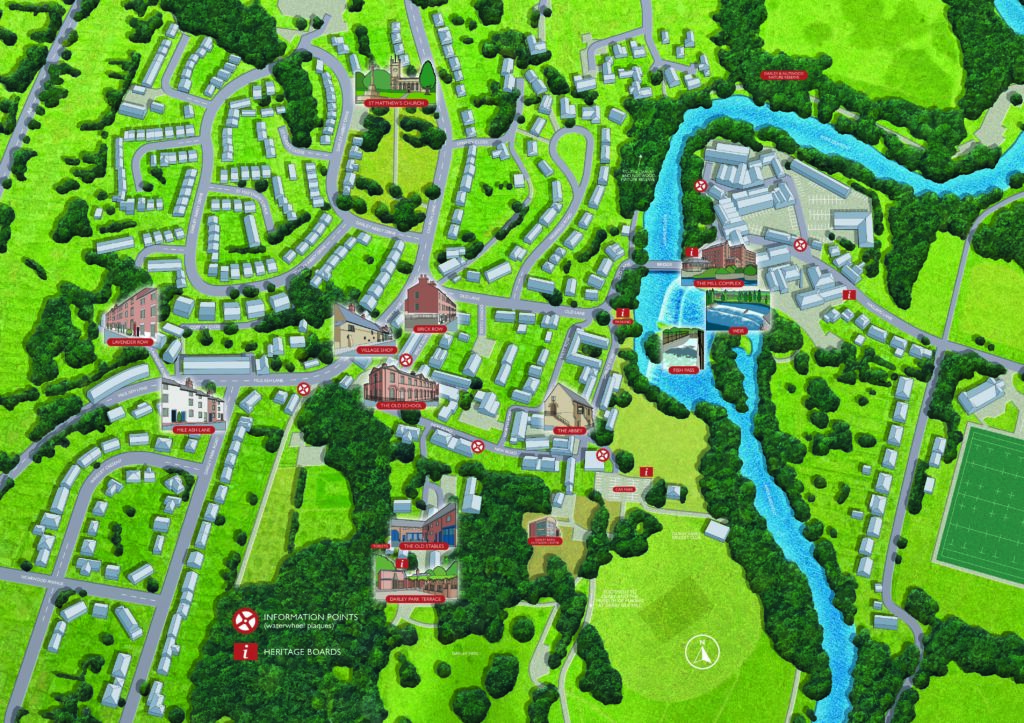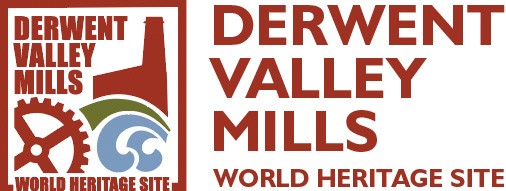Darley Abbey

Welcome to Darley Abbey
Interpretation Trail
Darley Abbey is an important element of the Derwent Valley Mills World Heritage Site. There are interpretation panels in the village and on the mill site, to help you find out more about the key historic areas. There are also a series of waterwheel-shaped plaques to look out for, with details on how to find out more information. This map will help you to find the boards and plaques. Here is a short video to show you how to use the QR codes.
To download a copy of the map, click here
Darley Abbey and Derby – a Spirit of Community
This is a place of ancient settlements, natural beauty, making and Enlightenment. It is the birthplace of the modern factory, in a city which has been a powerhouse of creativity and manufacturing for over 300 years – where new ideas and technologies follow in the footsteps of pioneers who transformed the industrial world with their ingenuity and vision.
It is the site of an ancient community, rich in legends and a gateway to the open countryside of the north, where the Derwent once powered a model industrial village of mills and homes – now transformed, cherished by its residents and thriving with new businesses and entrepreneurs.
The river’s rushing waters which once powered the mills widen and slow in this place. It is a serene haven for wildlife alongside Darley Park – a peaceful green breathing space for the city, ever changing with the seasons and loved by generations who have joined here to celebrate nature and life through music and song.
A short history of Darley Abbey

The building of the Abbey at Darley was started c.1160. With the Dissolution of the Monasteries by Henry V111, the Abbey at Darley ceased to exist in 1538. During the period between the dissolution of the Abbey and the building of the first Cotton Mill, a small industrial hamlet had grown up with a variety of small water powered mills – some of them were on the site when the Evans family purchased the land in 1778.
Encouraged by Richard Arkwright, Thomas Evans, a well-established Industrialist, and his brother, the Rev. Edmund Evans, had their first mill, the Long Mill, fully operational by 1788. The building of the mill village, across the river, began in 1792. Subsequently further spinning mills were built on the site. The thread produced was marketed under the brand name of Boar’s Head Cotton and the mills were called The Boar’s Head Mills.
Thomas Evans was one of the entrepreneurs who by harnessing waterpower continued the idea of a factory system, which originated in Derbyshire’s Derwent Valley. Before then people made thread by hand but once the mills and factories were built, they housed machines which were fast and efficient and could run continually, making thread more plentiful and cheaper. The production of cheaper cloth enabled everyone, not just the wealthy, to buy more cloth and our modern fashion industry was founded.
William Evans, son of Thomas, married Elizabeth, daughter of Jedediah Strutt, who had financed much of Arkwright’s Cromford mill and then built his own mills in Belper, then Milford. William’s sister, Barbara, married William Strutt, son of Jedediah. His brother, Walter Evans, was instrumental in the building of St. Matthew’s Church and the village school.
The Evans family in Darley Abbey ended with the death of Ada Evans in 1929. The family home, Darley Hall, and the surrounding parkland were donated to the people of Derby, to become Darley Park. Darley Hall was used as a grammar school for a time, but was demolished in 1962. A terrace was built on the footprint of the building, adjacent to the Terrace Café, the former billiard room.
The Boar’s Head Cotton Mills are the most complete collection of cotton spinning buildings from the late 18th century. The village likewise remains as it developed, with the houses retaining their unique character.

